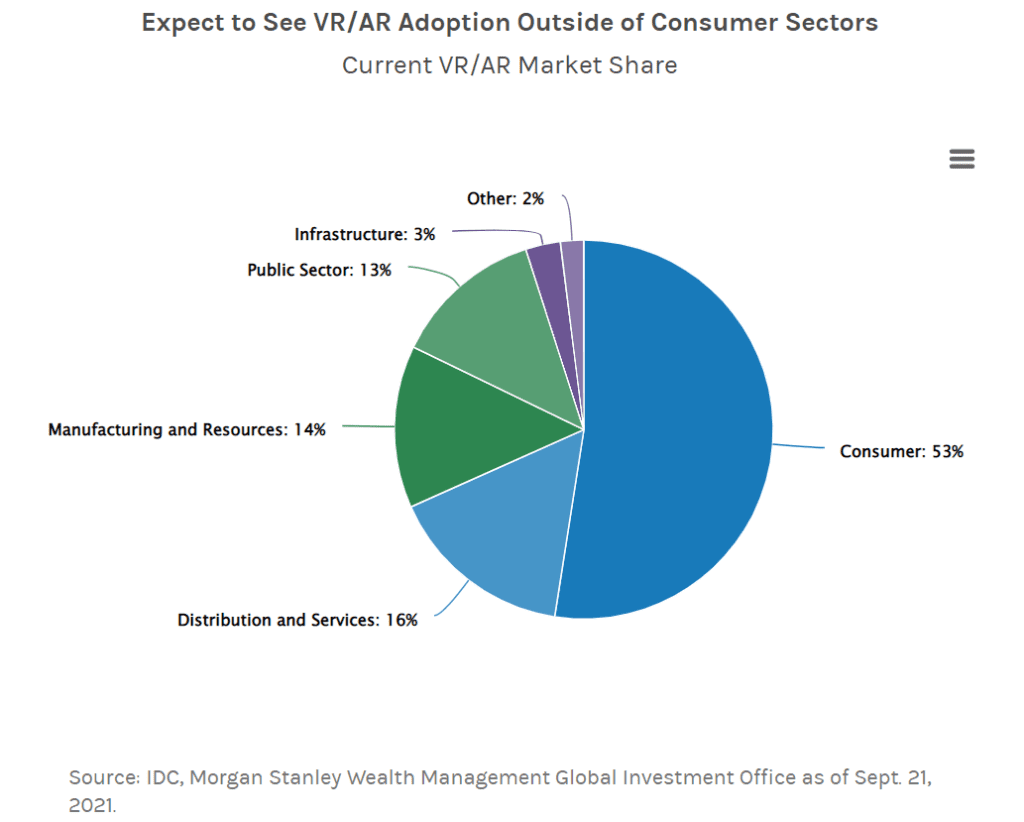A guide to the Metaverse, what it does and why it will be important both in business and our personal lives. Last year, I wrote a small piece on Medium talking about Digital Marketing for Blockchain & Cryptocurrency Companies. This was driven by some confusion by a few DeFi start-ups on Reddit trying to understand how marketing in the mainstream, if there is such a thing as mainstream, could help in the adoption of blockchain backed financial tech.
Though we may be familiar with world like Artificial Intelligence (AI) and the Internet of Things (IoT), companies are now grappling with new words have been added to our vocabulary. Terms such as Blockchain, Non Fungible Tokens (NFTs), Decentralized Finance (DeFi) and Web3 are fast becoming mainstream.
The naysayers are the same who said that the internet would never catch on. So it always does well to remember that 15 or so years ago there was no YouTube, Spotify, Netflix, Amazon, Bitcoin, iPhone, Instagram…etc. you get the point.
Equally, just looking at one platform, Netflix – there would be no Succession, Ozark and Breaking Bad. Though there have been a few duds, for creators it has been a boon. This demand for quality has sparked the growth for others to follow, namely Amazon Prime Video, Disney+, Apple TV to name but a few. The mainstream networks did not have the creative talent or deep pockets to invest in these series or formats.
Apple recently acquired AI Music, a start-up that uses artificial intelligence and has created an “Infinite Music Engine” that generates bespoke audio solutions for marketers, publishers, fitness professionals, and creative agencies. This is all in line with Apple bolstering its content capacity to offer an alternative to Spotify.
So, it is this innovation and investment that is driving a whole new area beyond entertainment. The metaverse is all encompassing and will be a tour de force that will both enhance and disrupt the world as we know it today.
The key point to remember that it is still fairly embryonic and that will really see true fruition in 5 to 15 years’ time.
About this guide
This guide will look at all the various aspects of the Metaverse and like the film, The Matrix, try and help you to understand ‘what it is’.
This guide will be evergreen and be updated as the market shifts and new developments take place.
The guide is designed for those companies and individual looking to understand and adapt their organizations for the future.
So let’s start at the beginning.
The Metaverse
So you may have heard a lot of talk recently about the metaverse recently. Most likely it will have been from the fallout of the Facebook debacle its name change to Meta. At the Facebook Connect event, the word Metaverse was mentioned over 80 times and is a key part of Facebook’s future, driven mainly by Facebook Reality Labs – a science, engineering and technology division of the company
You will also have seen how the Metaverse is increasingly being used by key influencers on social media like Gary Vaynerchuk, where the serial entrepreneur, NFT artist and futurist has constantly talking about this brave new world – even securing a rare interview with Facebook founder, Mark Zuckerberg.

History
The Metaverse as we know it today, can find its origins back in a platform called Second Life. Second life was a virtual world created in 2003 by Linden Lab. Linden Lab was founded in 1999 with its headquarters in California. In Second Life you have the ability to trave new world and assume a character, an avatar and live a full virtual life.
Second Life the created a breakthrough moment in 2019 when it launched a registered money service. The platform was called Tilia and it allowed people to buy and sell in their virtual communities.
To this day, Tilia is still used in gaming environments and other virtual worlds to monetize their platforms and create a near world existence for commerce and trade.
These were the early days of the Metaverse and with the growth of computing, gaming and blockchain technology, the ecosystem continues to evolve.
Where does the name Metaverse come from?
The term Metaverse was first coined back in June 2000 by the author Neal Stephenson in his book, Snow Crash. The book looks at a surreal and bizarre America of the future that many say is actually happing in real life. The book is one of Time Magazine’s top 100 best English-language novels.
The Metaverse today
If you have a teenage son or daughter, it is highly probable that they will have a games consul or play computer games. Platforms like PlayStation and Xbox are more than somewhere to play games. These have become social hubs.
The players have a unique persona, a character and personality. With the advent of games like Rocket League or platforms such as Roblox, these virtual worlds are very familiar and second nature to those ages between 12-25.
Having grown from the early days of Minecraft, these platforms have moved from being a sub-culture to mainstream social communities. These are now preferred regular meeting venues where the participants have never felt closer.
All of this part of the “Metaverse.”
And it’s expanding into new areas and will have numerous applications.
Why the Metaverse is important
We can see that the Metaverse, in part is already here. They question is, so what?
Gaming platforms like Roblox and Fortnite have millions of people engaging in this virtual world already. In many ways, gaming was the gateway to the Metaverse and a good 20 years after Second Life, the Metaverse is maturing.
Going beyond the evolution of gaming, there have for its acquisition and numerous developments that will have an impact on where we go from here.
What Big Tech is doing
Recently, Microsoft acquired Activation Blizzard, a video gaming developer for $69B, in cash. This is the company’s biggest acquisition and more than double what it paid back in 2016 for business social network, LinkedIn. This goes to show that large tech companies are taking the growth of new virtual worlds seriously. In short this is not going away.
Not to be undone, tech bemouth Alphabet has flexed its muscles and openly talked about its intent to enter the fray. Alphabet’s main operating brand, Google recently told investors that it was creating a new unit focused on blockchain technology. This new unit will sit within the well-known innovation division, Google Labs.
Google Labs also house’s a rather less known but fascinating company called X Development formally Google X. X Development is a semi secretive research and development company with a focus on Artificial intelligence, Computational neuroscience, Health care and Biotechnology.
It would be no surprise to see blockchain technology sitting on this division.
Google has already invested heavily in Augmented Reality (AR) and the move into distributed systems makes sense and will also help keep the company relevant as consumers and business needs change.
It also makes sense commercially as the company biggest used products like Google Maps, Android and Google Cloud start their immersion into the metaverse.
The view of Big Finance
When large institution like banks, especially investment banks start talking about the future, people tend to sit up and listen. This is down to a number of factors but mainly two things. Firstly, they have and work with huge Innovation teams that model what the future trends may be. Secondly, they are continually looking for investment opportunities that will make them and their client’s money.
Recently, Goldman Sachs who were the first major financial institution to say that the cryptocurrency Bitcoin was classed as a financial asset, have waded into the Metaverse debate. In a recent former UBS managing director in equity research covering the US internet and interactive entertainment sector, Eric Sheridan – now at the research division of the prestigious investment bank has predicted, that the metaverse could be an $8 trillion opportunity.
Eric Sheridan said, “We look at the digital economy today, which is roughly about 20%, 25% of the global economy … We see the digital economy continuing to grow, and on top of that we see a virtual economy that will grow within and alongside this digital economy.”
He went on to say, ” “That’s how we came up with the number for various outcomes of anywhere from $2 trillion to $12 trillion, with $8 trillion at the midpoint of all potential outcomes,”
Sheridan is not alone. Many in the banking sector are predicting that the metaverse along with the adoption of blockchain, AI and the whole Web3 will be huge, or in some cases, massive, Haim Israel of Bank of America have been quoted saying, “I definitely believe this is a massive, massive opportunity.… You need the right platforms… that is definitely going to be a big opportunity for this entire ecosystem.”
If it needed reinforcing, both Goldman Sachs and Bank of America were backed by Vijay Chandar, Investment Strategist, Wealth Management at Morgan Stanley.
Morgan Stanley looked at the growth of VR and AR were being adopted by so many industry sectors from healthcare to construction.

The bank in its recent research asks us to “Think of the metaverse as a digital realm of the future, like the next evolution of the internet. Fully developed, it could one day allow people to interact, work and play in immersive virtual spaces.”
In brief conclusion, having just looked at these three major banks along with the previous tech behemoth’s we looked at earlier, it is clear that both dollar investment, company direction and overall sentiment, is hugely geared to what the metaverse will become over the next few years.
Let’s look at three emerging markets and
Non-Fungible Tokens (NFTs)
The growth of isolated digital ownership of art and music is growing. NFTs, are unique, secure purchase backed by a super ledger [blockchain] to authenticate the purchase and ownership of the NFT.
To learn more about NFTs and why they’re important – click here.
Here are some other terms used within the NFT echo systems that you will come acrosszzzz and I will try an make the descriptions as simple as possible. Please bare in mind that in most cases there will be a more technical explations that sits behind it. If you are keen to learn more, please see the section at the end entitled, how can Digital Clarity Help? So let’s start at the beginning.
So what is an NFT?
In simple terms an NFT is a unique code that sits on a blockchain. The code cannot be replicated.
What and why are NFTs used
Again, in simple terms, NFTs are used to create something tangible against as asset like a digital artwork. As this artwork is tokenised, and on a blockchain, it makes the work unique that cannot be replicated, therefore reducing the risk of fraud, at the same time creating a new marketplace.
What is a DOA
Hybrid offices & meetings
The global pandemic reeked so much havoc in people’s lives, that the way we work and live has never been the same. This change to hybrid or home and office working seems like it here to stay.
As platform like Zoom and Teams develop, expect richer and more immersive meeting with people from all round the world, it the comfort of your own living room.
Virtual & Augmented Reality – VR & AR
Already working hand in hand VR and AR are the bedrock of the metaverse. The image of the Facebook Oculus and Microsoft HoloLens headsets, are synonymous with the metaverse and our perception of this virtual world.
These will become more mainstream and in time we will have full 3d holograms for both business and entertainment.
How can Digital Clarity help?
Digital Clarity help’s its clients navigate through the complexities of change and how it impacts a company’s brand position and marketing efforts.
Though many CMO’s and C-suite boards are aware of some these terms, few are actively reviewing their marketing or devising strategies to address the impact, let alone the disruption these emerging technologies will have on their business and brand.
If you would like to learn more about how Digital Clarity can help you review your current digital footprint and what future facing strategy may look like, please contact Reggie James on the details below.







